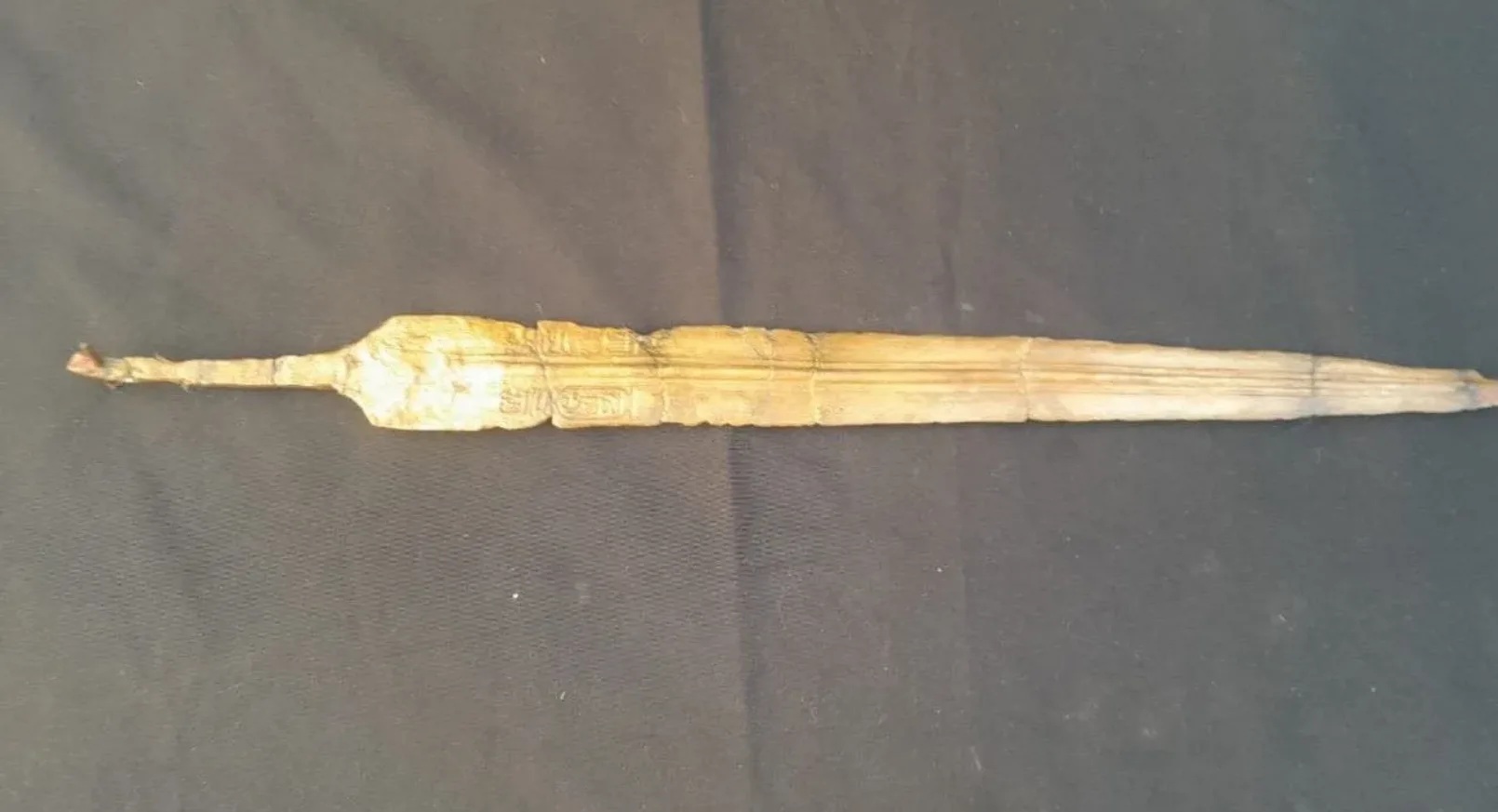In a remarkable archaeological find, researchers have uncovered a 3,000-year-old bronze sword believed to have once belonged to an elite warrior during the reign of Pharaoh Ramses II. This extraordinary artifact offers a rare glimpse into the military power, technological advances, and craftsmanship of one of ancient Egypt’s most iconic and formidable rulers.
The bronze sword, which dates back to the late Bronze Age, was discovered in what is thought to be an ancient battlefield or burial site. The site has been under excavation for several years, with archaeologists gradually uncovering layers of history that stretch back to the era when Ramses II ruled Egypt—an era marked by military campaigns, territorial expansion, and monumental architectural projects.
Ramses II, often referred to as “Ramses the Great,” ruled for 66 years, from 1279 to 1213 BCE. His reign is renowned for the Battle of Kadesh, one of the largest chariot battles in history, fought against the Hittites. Although the battle ended in a stalemate, it solidified Ramses II’s reputation as a military tactician and a powerful leader. The discovery of a bronze sword from this period provides a tangible connection to the military culture of Ramses’ Egypt and underscores the significance of weaponry in his quest for supremacy.
Bronze was the dominant material for tools and weapons during much of Ramses II’s reign, before the advent of iron weaponry. The alloy, made from copper and tin, was prized for its durability, strength, and ability to be moulded into precise shapes. This sword, in particular, is thought to have been carried by a soldier of high rank, possibly an officer or commander, due to its exquisite craftsmanship and the fact that it was found in a location suggesting an elite burial site.
The importance of bronze in Egypt’s military technology cannot be overstated. Bronze weapons were key in the defense of Egypt’s borders and in its expansion into territories like Nubia and the Levant. The strength of bronze swords, spears, and shields allowed Egyptian soldiers to hold their own against rival civilizations such as the Hittites and the Mitanni. These weapons were not only functional but also symbolic, representing the power of Pharaoh and the might of his army.
The 3,000-year-old sword, though weathered by time, still reveals intricate details about the skill of the ancient Egyptian metalworkers. The blade shows evidence of having been sharpened regularly, indicating that it was likely used in battle rather than being purely ceremonial. The hilt, once adorned with precious materials such as gold or ivory, has lost much of its original embellishment, but traces remain, suggesting the sword was a prized possession.
The design of the sword is consistent with other examples from the period, with a broad, slightly curved blade ideal for slashing during close combat. This type of sword was particularly effective in chariot warfare, which was a dominant mode of battle in Egypt. Soldiers armed with swords and spears would ride chariots into battle, allowing for fast and agile attacks on enemy forces.
Ramses II’s military campaigns were extensive and ambitious. His campaigns in Canaan, Nubia, and the famous conflict with the Hittites at Kadesh were all part of his strategy to secure Egypt’s borders and expand its influence. The sword could have been part of the armament used in such campaigns, reflecting the level of military organization and preparedness that characterized Ramses’ reign.
The Battle of Kadesh, in particular, stands out as a major event in the history of Ramses II. Although the battle did not result in a decisive victory for either side, Ramses II declared it a great triumph in his inscriptions and monuments, further immortalizing his legacy as a warrior-king. In fact, Ramses II’s account of the battle is one of the earliest known examples of war propaganda. The bronze sword, with its martial utility, serves as a direct connection to the soldiers who fought under his command.
The discovery of this sword adds to the growing body of evidence that Egypt’s military might during the reign of Ramses II was as much a product of its technological advances as it was of its strategic prowess. The fact that the sword has survived for three millennia is a testament to the durability of bronze as a material, as well as to the care with which it was crafted. Moreover, such finds offer historians and archaeologists valuable insights into the daily lives of the
